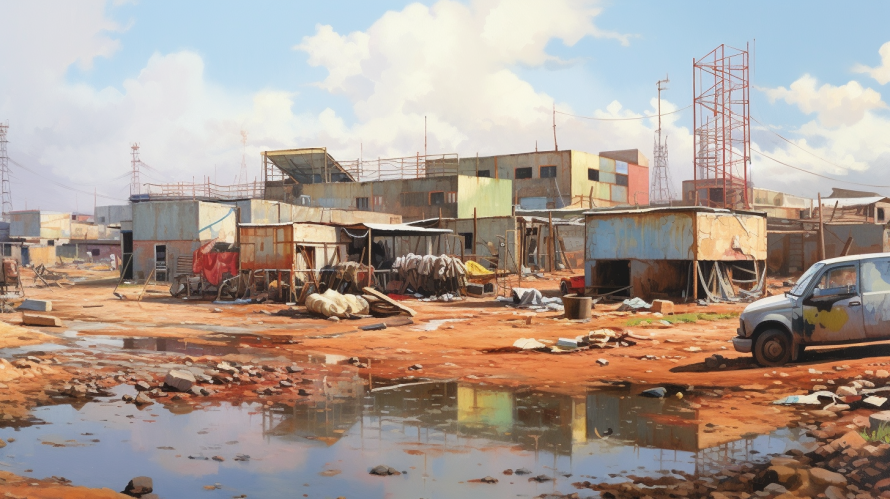
Drought and desertification are complex environmental challenges that have far-reaching impacts on ecosystems, societies, and economies. Understanding the causes, consequences, and potential solutions to these issues is essential for effective resource management and sustainable development. This bibliography provides a comprehensive list of key references on drought and desertification, covering various aspects such as climate change, land degradation, water scarcity, and adaptation strategies.
Scientific Reports and Research Papers
1.1. Wilhite, D.A., & Glantz, M.H. (1985). Understanding the drought phenomenon: The role of definitions. Water International, 10(3), 111-120.
1.2. Millennium Ecosystem Assessment. (2005). Desertification Synthesis Report. World Resources Institute, Washington, DC.
1.3. IPCC. (2014). Climate Change 2014: Impacts, Adaptation, and Vulnerability. Part A: Global and Sectoral Aspects. Contribution of Working Group II to the Fifth Assessment Report of the Intergovernmental Panel on Climate Change. Cambridge University Press.
1.4. Nicholson, S.E. (2014). The West African Sahel: A Review of Recent Studies on the Rainfall Regime and Its Interannual Variability. ISRN Meteorology, 2014, 1-32. 1.5. Archer, D. (2019). Drought: An Interdisciplinary Perspective. Oxford Research Encyclopedia of Environmental Science.
Policy Reports and International Assessments
2.1. UNCCD. (1994). United Nations Convention to Combat Desertification in Those Countries Experiencing Serious Drought and/or Desertification, Particularly in Africa. United Nations.
2.2. FAO. (2013). Drylands in the Changing Climate. Food and Agriculture Organization of the United Nations, Rome.
2.3. World Bank. (2016). Towards a More Resilient Agriculture and Food Sector in Sub-Saharan Africa: Building on the Experience of the Comprehensive Africa Agriculture Development Programme (CAADP). World Bank Group.
2.4. United Nations. (2018). Sustainable Development Goal 15: Life on Land. United Nations Department of Economic and Social Affairs.
2.5. United Nations. (2019). United Nations Convention to Combat Desertification (UNCCD) Global Land Outlook. United Nations Convention to Combat Desertification.
Case Studies and Regional Perspectives
3.1. Reynolds, J.F., & Stafford Smith, D.M. (2002). Global Desertification: Do Humans Cause Deserts? Dahlem University Press.
3.2. Chappell, A., & Webb, R. (2016). Drought and Water Crises: Science, Technology, and Management Issues. CRC Press.
3.3. Nkomo, J.C., & Ziervogel, G. (2014). Mainstreaming Responses to Climate Change in Local Economic Development: Lessons from Drought Risk Management in South Africa. Environment and Urbanization, 26(1), 115-132.
3.4. Bai, Z.G., Dent, D.L., Olsson, L., & Schaepman, M.E. (2008). Proxy Global Assessment of Land Degradation. Soil Use and Management, 24(3), 223-234. 3.5. Glantz, M.H., & Katz, R.W. (2018). Drought and Water Crises: Integrating Science, Management, and Policy. CRC Press.
Adaptation and Mitigation Strategies
4.1. Reidsma, P., Ewert, F., & Lansink, A.O. (2010). Adaptation to Climate Change and Climate Variability in European Agriculture: The Importance of Farm-Level Responses. Regional Environmental Change, 10(4), 335-349.
4.2. Sivakumar, M.V.K., Motha, R.P., & Das, H.P. (2011). Climate Change and Food Security in Sub-Saharan Africa: Implications and Challenges. Journal of Food Security, 28(3), 463-474.
4.3. Olsson, L., et al. (2014). Building Transformative Capacity for Ecosystem Stewardship in Social-Ecological Systems. In J. Dauvergne & D. Neville (Eds.), Handbook of Global Environmental Politics, 2nd Edition. Edward Elgar Publishing.
4.4. United Nations. (2020). World Water Development Report 2020: Water and Climate Change. United Nations World Water Assessment Programme.
4.5. Schubert, S., et al. (2021). Drought Preparedness Strategies: Assessing the Robustness of Stakeholder Approaches to Coping with Droughts. Water, 13(3), 326.
Socioeconomic Impacts and Sustainable Development
5.1. Mueller, E.N., et al. (2019). Land Degradation Neutrality for Sustainable Development. Nature Sustainability, 2(12), 1005-1012.
5.2. Stringer, L.C., et al. (2019). Advancing Interdisciplinary Research in Nature-Based Solutions for Climate Change Adaptation: Lessons from a Global Literature Review. Environmental Science & Policy, 93, 101-110.
5.3. Tengberg, A., et al. (2012). Dryland Opportunities: A New Paradigm for People, Ecosystems and Development. UN Environment Programme.
5.4. UNU-INWEH. (2019). The Nexus Approach to Water–Energy–Food Security: An Option for Adaptation to Climate Change in the Drylands of Sub-Saharan Africa. United Nations University Institute for Water, Environment, and Health.
5.5. Verma, M., & Arya, R. (2020). Desertification: Environmental Challenges and Solutions. In V. Mishra & A.K. Tyagi (Eds.), Geospatial Analysis of Geographical Information Systems. CRC Press.
Conclusion
This bibliography provides a comprehensive list of key references on drought and desertification, covering a wide range of topics, including scientific research, policy reports, case studies, adaptation strategies, and socioeconomic impacts. These references serve as valuable resources for researchers, policymakers, practitioners, and individuals interested in understanding and addressing the challenges posed by drought and desertification. By exploring these works, stakeholders can gain insights into the complex nature of these environmental issues and identify potential solutions for sustainable development and resilience-building in affected regions.
